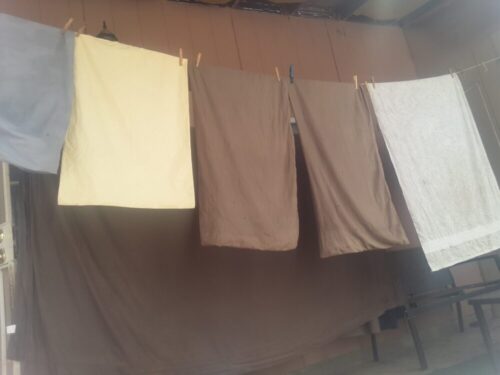
Hi again, K (partnering with Phoenix) here. In previous posts, I talked about ways to save money and electricity in small ways while still living on the grid. Updating large appliances can lead to substantial cost- and energy- savings well before you begin homesteading.
For example, if your fridge is more than ten years old, give some thought to replacing it with a newer, more energy-efficient model. Organize your fridge so you know where everything is and spend less time with the fridge door open. You’ll be amazed how much difference this makes. Turn the fridge thermostat up to a warmer setting so it cycles less. Make sure that leftovers are cool before storing them in the fridge, a good food sanitation practice anyway.
Check out your hot water heater. If it isn’t covered with a thermal blanket, think about doing so. This allows for heat retention, and less energy needed to keep the water hot. Check the thermostat on the water heater; if it’s at the highest setting, turn it down. The higher the temperature setting, the more energy you use to keep it at that temperature.
Change out your shower head for a water-saving model. You can get just as clean with less water. Try taking shorter showers–you’ll use less water and energy. On board the ship or submarine, the Navy asks service personnel to take showers as short as two minutes since fresh water storage is limited at sea. This is done by wetting down, turning off the water, lathering up, and then turning it on again to rinse off. In the winter, plug the drain when taking a shower and allow the heat from the water to transfer to the bathroom before letting it out. This is one simple way to use greywater, which is all reusable water except the water from the kitchen or toilet. That’s considered blackwater and is not safe for reuse for most applications.
You can also do like we do–use the shower water you saved when plugging up the drain to flush your toilets, again reducing water consumption. You can do this simply by scooping the water out with a pitcher and pouring about a gallon into the toilet bowl. Pouring it quickly causes the toilet to flush itself. Phoenix especially appreciates this strategy, as she feels less guilty flushing the toilet, considering the average toilet uses 2-3 gallons of drinkable water per flush.
Another water-saving strategy is to use laundry water for plants. Make sure the detergent you use is biodegradable (breaks down into harmless components) or better yet bioavailable (breaks down into components plants and microbes can use). The phosphorus in the detergents will promote plant root growth and encourage blossoms resulting in more fruit. Clearly this can save you money on fertilizers.
Instead of using a clothes dryer, try hanging clothes up to dry either on a clothesline if you have space or a drying rack. I put clotheslines in my greenhouse attached to the house; with the heat in there, my clothes are dry within a day. Phoenix hangs wet clothes over the plant beds in this very arid climate, allowing the drippage to water the plants as well.
Many dishwashers these days are energy- and water-efficient. You can add to those savings by using fewer dishes while on the grid. To prepare for off-grid living, you might want to practice water-efficient methods of hand-washing dishes. Some people leave the water running the whole time they’re washing dishes, which is more wasteful than using a water-efficient dishwasher. Phoenix and I have different strategies for this. When I do dishes, I fill the sink with soapy water, scrub the dishes, and then rinse with a low water flow. Phoenix soaps up dishes all at once without water running, and then rinses all the dishes, again with a low water flow. Similarly, I tend to eat meals that don’t require plates (pizza, sandwiches, pieces of chicken, etc) while Phoenix cooks a week’s worth of meals on the weekend to minimize dirty pots and pans. See what works for you.
Next blog post: Part 4: Possible solutions for your sustainable living–small-scale gardening (By K)
